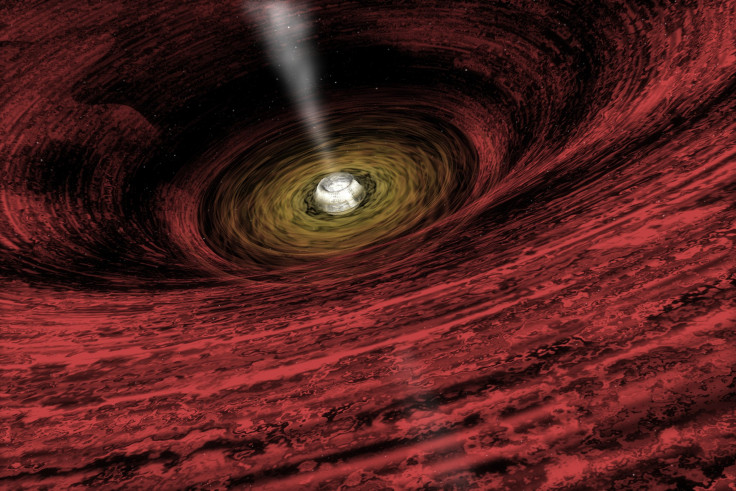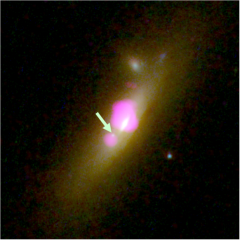Mysterious Super-Massive Black Hole Leaves Astronomers Baffled By Its Lack Of Stars

Astronomers have detected a galaxy containing two super-massive black holes with astonishingly different properties. One super-massive black hole is surrounded by stars while the other is not, leaving experts at a loss to explain the phenomenon.
Using the Hubble Space Telescope and Chandra X-Ray Observatory, astronomers first came across the rare black holes in the galaxy known as SDSS J1126+2944. The findings, which were published in the Astrophysical Journal, could offer new insights into the development of black holes and their behavior.
“One black hole is starved of stars, and has 500 times fewer stars associated with it than the other black hole,” said Julie Comerford, an assistant professor in Colorado University at Boulder’s Department of Astrophysical and Planetary Sciences and the lead investigator of the new research. “The question is why there’s such a discrepancy.”

Researchers offered theories to explain the unusual black hole last week at the American Astronomical Society (AAS) meeting at Kissimmee, Florida. One theory they suggest is that it is possible that the "naked black hole" was ripped apart during a merging of two galaxies, dispersing the stars about. Another suggestion is that the super-massive black hole may be an intermediate black hole, which are too large to be created by exploding massive stars.
“Theory predicts that intermediate black holes should exist, but they are difficult to pinpoint because we don’t know exactly where to look,” said Scott Barrows, a post-doctoral researcher who co-authored the study. “This unusual galaxy may provide a rare glimpse of one of these intermediate mass black holes.”
© Copyright IBTimes 2024. All rights reserved.






















